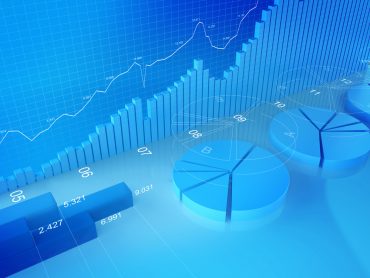
Data needed for ESG reporting must be easily available to the cloud services to assist in analysis. Smart data pipelines can help.
Shareholders and investment funds are pushing companies to adopt programs or policies that are keyed to various environmental, social, and governance (ESG) goals. And regulators around the world are constantly crafting new ESG disclosure requirements. That’s driven ESG reporting to new levels of importance in businesses today.
Much of the data required for ESG reporting resides in ERP, CRM, and other corporate databases. And many ESG reports must include outside data, as well. The volume of data that goes into ESG analysis and reports, and the variety of ESG reports needed for different stakeholders, has many businesses making that data available to cloud data and analytics services to rapidly meet stakeholder needs.
![Sponsored: Mainframe Data Is Critical for Cloud Analytics Success—But Getting to It Isn’t Easy [Read Now]](https://no-cache.hubspot.com/cta/default/8019034/26b0ec5b-3e0f-4730-8723-52157f695aa5.png)
Such an approach is becoming common. While ESG is a relatively new goal, a PwC survey found that 34% of Fortune 1000 companies already leverage the cloud to improve ESG reporting, while 26% plan to do so. Many use the cloud to centrally integrate, join, and store their own and third-party ESG data that is analyzed and used in their reports.
As such, company data needed for ESG reporting must be easily available to the cloud services (such as those offered by Snowflake) used in these efforts.
ESG reporting complexities abound
A recent StreamSets blog put the ESG reporting data integration challenge into perspective. The blog noted that “to inform investment decisions and offerings for their clients, financial services and investment firms require access to ESG data and scores. Since many companies don’t report all the information firms need, they have to cross-reference and combine corporate ESG reports with other data sources like internal assessments/ESG data hubs and third-party providers of ESG scores (e.g., S&P Global ESG Scores).”
As such, each data report is built on different standards, at different frequencies, and using inconsistent data formats, which can lead to data quality nightmares upon integration.
The blog noted that businesses themselves have comparable data integration issues when compiling ESG data for reporting. Their reports often need data from multiple departments and sources. The blog noted that the needed data is sprawled across the organization, with some in modern systems, some in legacy systems, and still more in third-party systems in various formats.
See also: Actioning Sustainability: How Tech is Making ESG a Reality
ESG reporting frameworks emerge
A top issue businesses face with ESG is that data comes from both internal and external sources. The data is frequently changing. And there is a constant need to include new data sources. Making matters more complicated is that a business must generate different ESG-related reports for different purposes and stakeholders.
A recent trend in this wild west environment is the adoption of ESG frameworks and standards. One standard that has garnered a great amount of attention is the World Economic Council’s Stakeholder Capitalism Metrics. The council developed the standard in collaboration with the Big Four accounting firms, including Deloitte, EY, KPMG, and PwC.
The Stakeholder Capitalism Metrics (the Metrics for short) position ESG reporting and disclosure under four pillars that cover governance, planet, people, and prosperity. Each pillar has several themes where ESG measurements are applied and, when taken together, produce an overall ESG result.
Other popular and emerging ESG frameworks and standards include:
- IFRS Sustainability Disclosure Standards: These are standards developed by the International Sustainability Standards Board (ISSB), which was set up in 2021 by the International Financial Reporting Standards (IFRS) Foundation.
- SASB Standards: These are standards originally developed by the Sustainability Accounting Standards Board. The SASB Standards contain specifications on disclosing financial material sustainability information across more than 75 industries.
- CDSB Framework: Developed by the Climate Disclosure Standards Board (CDSB), this standard supports the inclusion of ESG reporting in corporate reports, such as annual reports and 10-K filings.
- CDP: The Carbon Disclosure Project, known as CDP, operates an environmental disclosure system that companies can use to report on their business risks and opportunities related to climate change, water security, and deforestation.
- GRI Standards: The Global Reporting Initiative (GRI) developed the standards to help organizations understand and report on their impacts on the economy, environment, and people.
Depending on a company’s board, stockholders, and other stakeholders, a business might be asked or required to produce reports in any of these areas and possibly more.
Providing access to the data so it can be available for reports or analysis often requires great effort. If the data were only needed once a year or periodically, teams could manually set up access on an as-needed basis. But in today’s fast-paced business environments, such a process takes too long.
A better approach would be to eliminate that middle tier and provide those that need data for ESG reporting with secure access to the data. Such an approach alleviates the enormous burden on those responsible for managing the data and the systems it resides on. And it makes the data available to those working on the reports and analysis when needed.
Supporting the needed data pipelines
That is an area where StreamSets, a Software AG company, can help. Its solutions help companies unlock data from their numerous data sources for cloud analytics.
StreamSets complements its easy access to data with expertise in smart data pipelines with many attributes needed for ESG reporting.
StreamSets helps businesses build resilient, repeatable, and scalable data pipelines that allow easy and secure connections to common ESG data sources. They ingest and transform ESG data and move it to modern data platforms like Snowflake.
Secure, easy data access and smart data pipelines provide the underlying technical infrastructure that allows businesses to leverage the cloud to keep up with their growing and changing ESG reporting requirements.
![Sponsored: Mainframe Data Is Critical for Cloud Analytics Success—But Getting to It Isn’t Easy [Read Now]](https://no-cache.hubspot.com/cta/default/8019034/26b0ec5b-3e0f-4730-8723-52157f695aa5.png)






